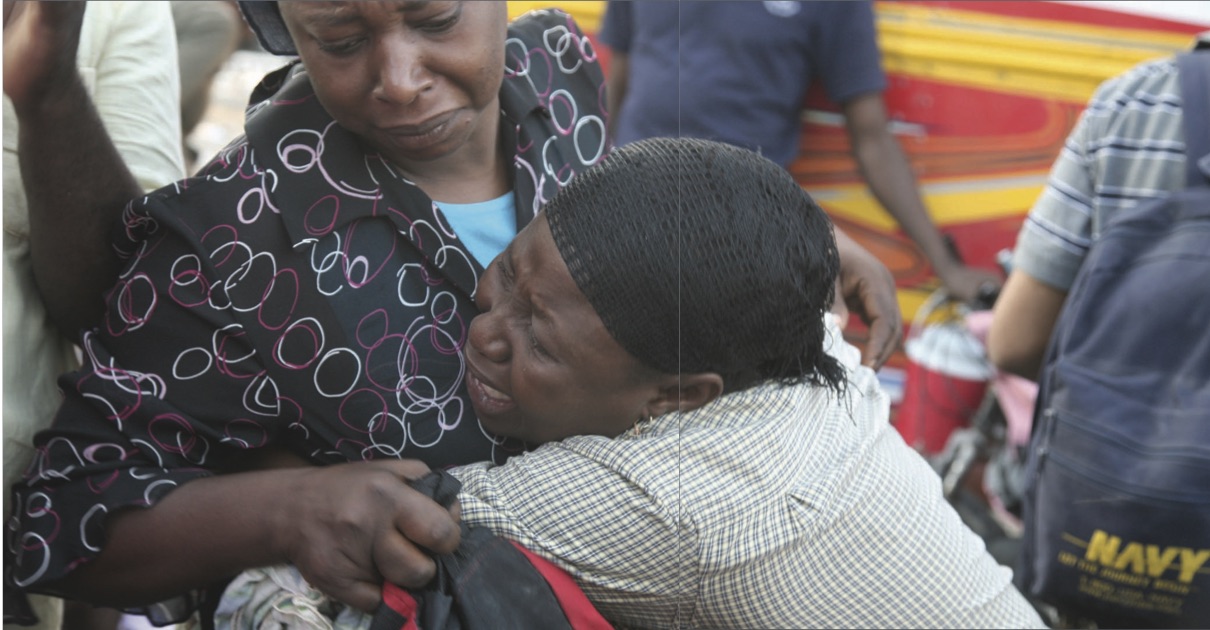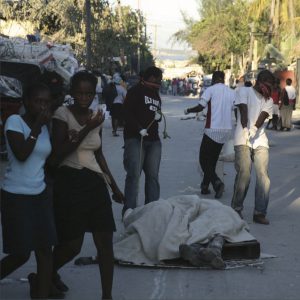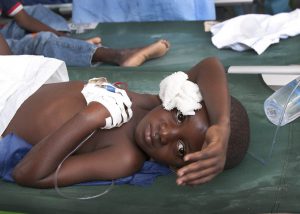Morel Collective Curatorial Statement

In his work, “On the Concept of History,” Walter Benjamin critiques the idea that the history and progress are inextricably linked, and that the progression of time is linear. Rather, Benjamin posits that history is like that of the angel in the Klee painting “Angelus Novus.” In the painting, the “angel of history” faces the past, and “where we perceive a chain of events, he sees one single catastrophe which keeps piling wreckage upon wreckage and hurls it in front of his feet” (Benjamin 257). In this way, history is not a singular development of linear progress moving irresistibly towards a perfectible future, but rather is history is a site influenced and nuanced by catastrophe.
Thus, Benjamin’s critique of progress calls into question the historicists view of history, allowing him to stage his larger question and problematic: If history always moves forward and progresses, how is it that catastrophes are still possible? This question inevitably engenders a different view of history, a conceptual shift, with the answer being found in historical materialism. From this conceptual understanding and position, Benjamin asserts that history is not progress but rather an accumulation of catastrophe, disastrous events whose remnants pile onto each other constituting the past, with the future analogized as a storm that continues to pile wreckage on the already enormous heap of the past. The past is not removed from the future, then, but rather these conceptions are entangled like that of a constellation, coalescing and converging in what Benjamin deems the now.
Such unending and amassing catastrophe, such incessant devastation, is perfectly illustrated by the Haitian earthquake of 2010 and its aftermath. On January 12th, 2010, at 4:35 pm, Haiti was devastated by a magnitude 7.0 earthquake and multiple aftershocks. As many buildings and houses were deteriorating, the earthquake led to the disintegration of hospitals, schools, government buildings, and homes, killing and trapping many underneath the rubble. When the earthquake was over, about 316,000 lives were lost, 300,000 people were injured, more than one million people were displaced, and 3.3 million people were left facing food shortages.

These problems were only compounded after the earthquake ended. Due to the severity of the earthquake, many hospitals were unable to be used or completely decimated, leading to further casualties and long waits for medical treatment. As morgues began to reach capacity, mass graves were made, making it difficult to get exact numbers of those who had died. Many children were orphaned, leading to the increased likelihood of their exposure to exploitation, be that through abuse or human trafficking. Furthermore, a number of these children were adopted by foreigners through expedited adoption processes, moved away from their home country and culture. In addition, those who were displaced from their homes were forced to live in the only shelter available, scattered tent cities built hastily by aid organizations, which due to their poor infrastructure, were little protection from the issues rampant at the time.
Adding to such issues was the ineffectiveness of many NGOs and aid organizations. One example is that of the outbreak of a cholera epidemic beginning in October, just nine months after the earthquake. This was most likely due to UN peacekeeping forces contaminating with fecal matter the Artibonite River, further supported by the finding of a similar cholera outbreak in Kathmandu, the previous location of the same troops. As of 2016, 770,000 people were affected by cholera, and more than 9,200 had died, leading to the former Secretary General of the United Nations Ban Ki-moon to issue an apology. Another example is that of Oxfam, an international NGO which has been lambasted for the allegations that it tried to hide a scandal involving many of its agents exploiting Haitian children and women for sex. This has only been further supported by the finding that the leader of the Haitian aid program and one of the accused, Van Hauwermeiren, “had also been accused of hiring sex workers in Chad in 2006,” knowledge Oxfam chose to ignore when instating him as the head of their aid to Haiti (Selk and Rosenberg).

It is within this context and the immediate aftermath that Daniel Morel’s work should be positioned. His photographs, taken seconds after the confusion, panic, and wreckage engendered by the earthquake, are raw and viscerally disconcerting for the viewer. They provide a glimpse into the “state of emergency” that Benjamin would deem is not an exception or abnormality, but rather the everyday – a woman crying, uncertain of where her family may be; a mother crying over the body of her dead son; decomposed bodies being pulled through the streets.
In this way, Morel helps us to see history with new eyes, and like any historical materialist would strive to do, enables us to catch a glimpse of the past as it flashes up, even if it is within the brief moment of first looking at the picture. Or, in Morel’s own words: “I always see things like a click in photos” (Morel and Harris).
Therefore, the catastrophe and destruction Benjamin posits as history are not only present in the images, but almost palpable as we become witnesses of loss, even within the small temporal context that the photos were taken in. Families are being torn apart, futures are being decimated and erased, and lives are being changed, just within the immediate aftermath documented by Morel.
However, the beauty of Morel’s work is only further highlighted by the ways in which they interact with Benjamin’s conception of history as not only catastrophe, but amassed, unending catastrophe. In other words, the magnificence of Morel’s photographs of the earthquake are not only in the ways in which they demonstrate the catastrophic nature of history, but also in the ways that they serve as a preface to future disaster. As previously mentioned, the earthquake itself led to many immediate difficulties and issues for the Haiti, in terms of casualties, people being injured, and wide-scale displacement; however, the subsequent – or to use a more Benjamin inflected concept of history – accumulated consequences of such wreckage did not end after the earthquake itself. Instead, the history of Haiti, and thus the photographs Morel took of the aftermath of the earthquake, are only further nuanced and complicated by looking at the ways in which the constellational events of Haiti’s past (a prior colonial subject indebted to past imperialist powers and poverty-stricken country) and future (a country riddled with problems of infrastructure, cholera, sexual exploitation, and political turmoil) coalesce within the now of Morel’s pictures. Each picture provides a glimpse into the wreckage of the past and the wreckage to come in the future, crystallized within Morel’s flash of a “moment of danger” (255).
Therefore, while attempting to understand this monumental work and its multiple repercussions, locating it within the context of Haiti’s past and future can only lead to a deeper understanding of catastrophe, and the understanding of the conception of history as the repetition of such catastrophe. In this way, Morel becomes something like the “Angelus Novus” from the Klee painting, his back towards the future as the storm rages on, camera lens documenting the past and capturing not one single misfortune, but the piling of multiple instances of wreckage, destruction, and catastrophe.
Works Cited:
Benjamin, Walter. “On the Concept of History.” 1942.
Cook, Jesselyn. “7 Years After Haiti’s Earthquake, Millions Still Need Aid.” The Huffington Post, TheHuffingtonPost.com, 13 Jan. 2017, www.huffingtonpost.com/entry/haiti-earthquake-anniversary_us_5875108de4b02b5f858b3f9c.
Morel, Daniel, and Robert A. Harris. “Showcase: This Isn’t Show Business.” The New York Times, The New York Times, 27 Jan. 2010, lens.blogs.nytimes.com/2010/01/27/showcase-117/?_r=0.
Pallardy, Richard. “Haiti Earthquake of 2010.” Encyclopædia Britannica, Encyclopædia Britannica, Inc., 15 Dec. 2017, www.britannica.com/event/Haiti-earthquake-of-2010.
Selk, Avi, and Eli Rosenberg. “Oxfam Crisis Spreads as Haiti Suggests Aid Workers Exploited Children for Sex.” The Washington Post, WP Company, 12 Feb. 2018, www.washingtonpost.com/news/worldviews/wp/2018/02/11/oxfam-could-lose-funding-over-allegations-that-it-exploited-disaster-victims-for-sex/?utm_term=.134294a50fa1.